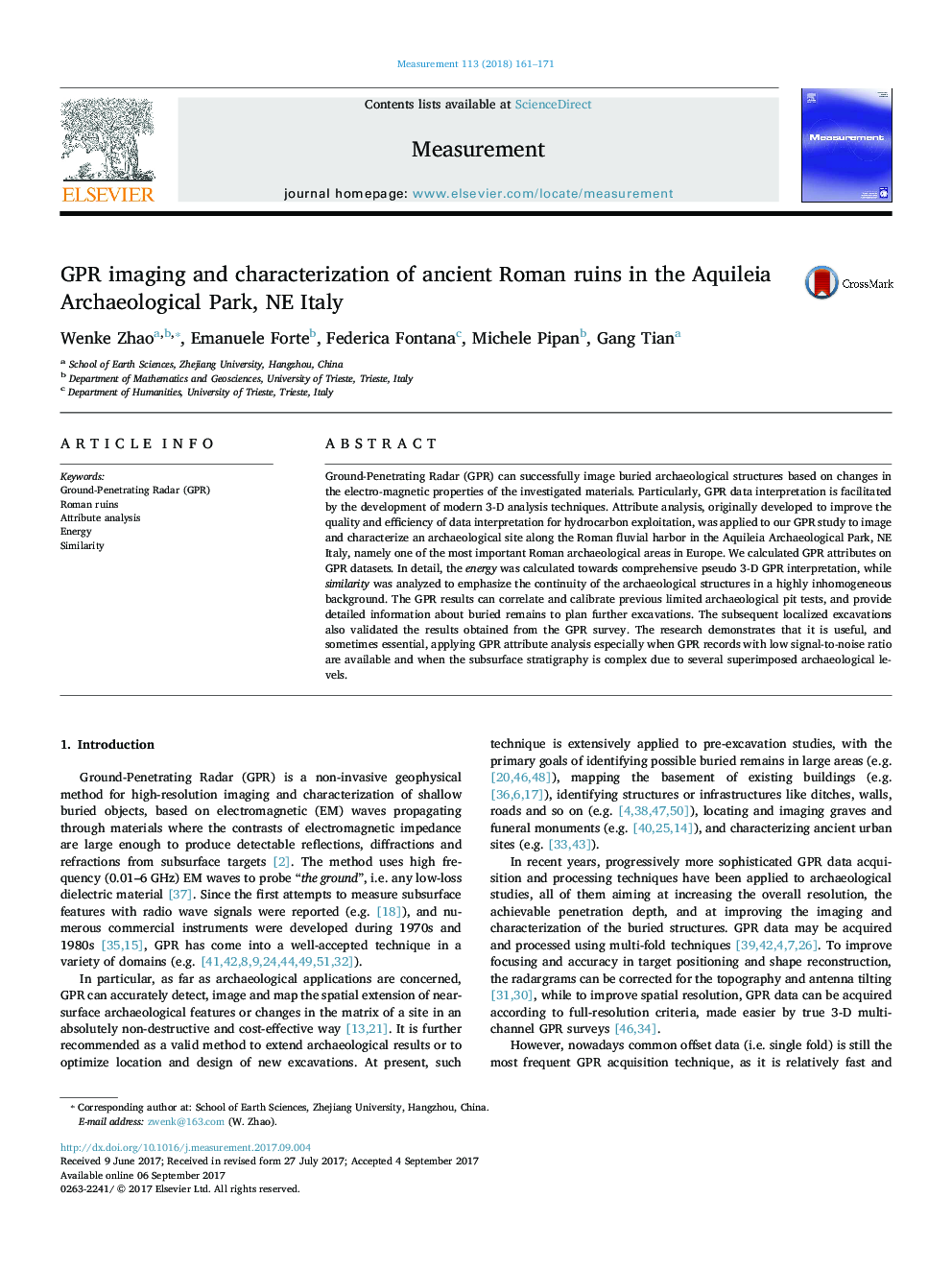| Article ID | Journal | Published Year | Pages | File Type |
|---|---|---|---|---|
| 5006409 | Measurement | 2018 | 11 Pages |
Abstract
Ground-Penetrating Radar (GPR) can successfully image buried archaeological structures based on changes in the electro-magnetic properties of the investigated materials. Particularly, GPR data interpretation is facilitated by the development of modern 3-D analysis techniques. Attribute analysis, originally developed to improve the quality and efficiency of data interpretation for hydrocarbon exploitation, was applied to our GPR study to image and characterize an archaeological site along the Roman fluvial harbor in the Aquileia Archaeological Park, NE Italy, namely one of the most important Roman archaeological areas in Europe. We calculated GPR attributes on GPR datasets. In detail, the energy was calculated towards comprehensive pseudo 3-D GPR interpretation, while similarity was analyzed to emphasize the continuity of the archaeological structures in a highly inhomogeneous background. The GPR results can correlate and calibrate previous limited archaeological pit tests, and provide detailed information about buried remains to plan further excavations. The subsequent localized excavations also validated the results obtained from the GPR survey. The research demonstrates that it is useful, and sometimes essential, applying GPR attribute analysis especially when GPR records with low signal-to-noise ratio are available and when the subsurface stratigraphy is complex due to several superimposed archaeological levels.
Related Topics
Physical Sciences and Engineering
Engineering
Control and Systems Engineering
Authors
Wenke Zhao, Emanuele Forte, Federica Fontana, Michele Pipan, Gang Tian,
